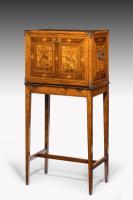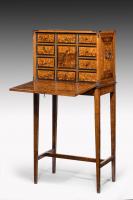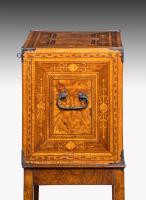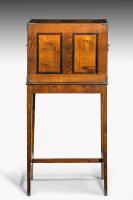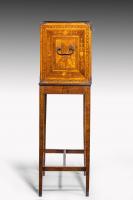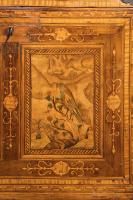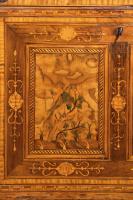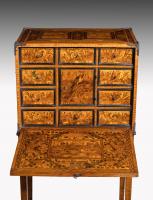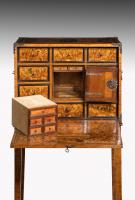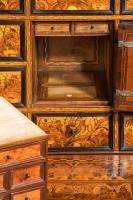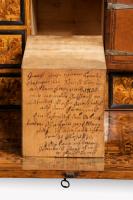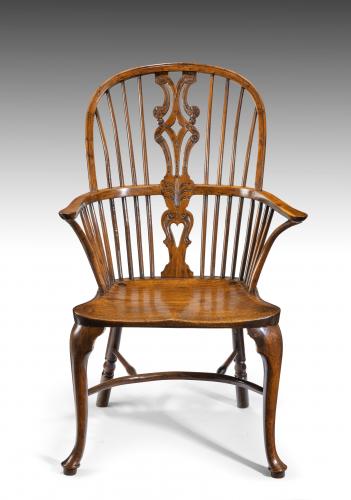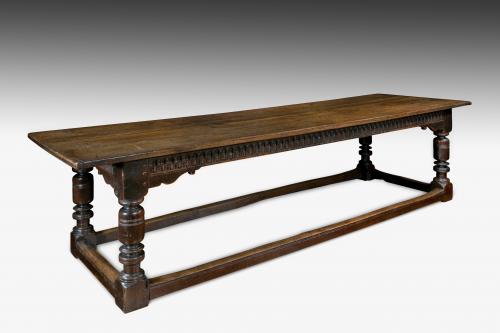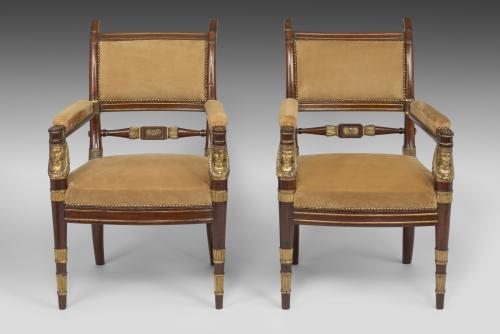
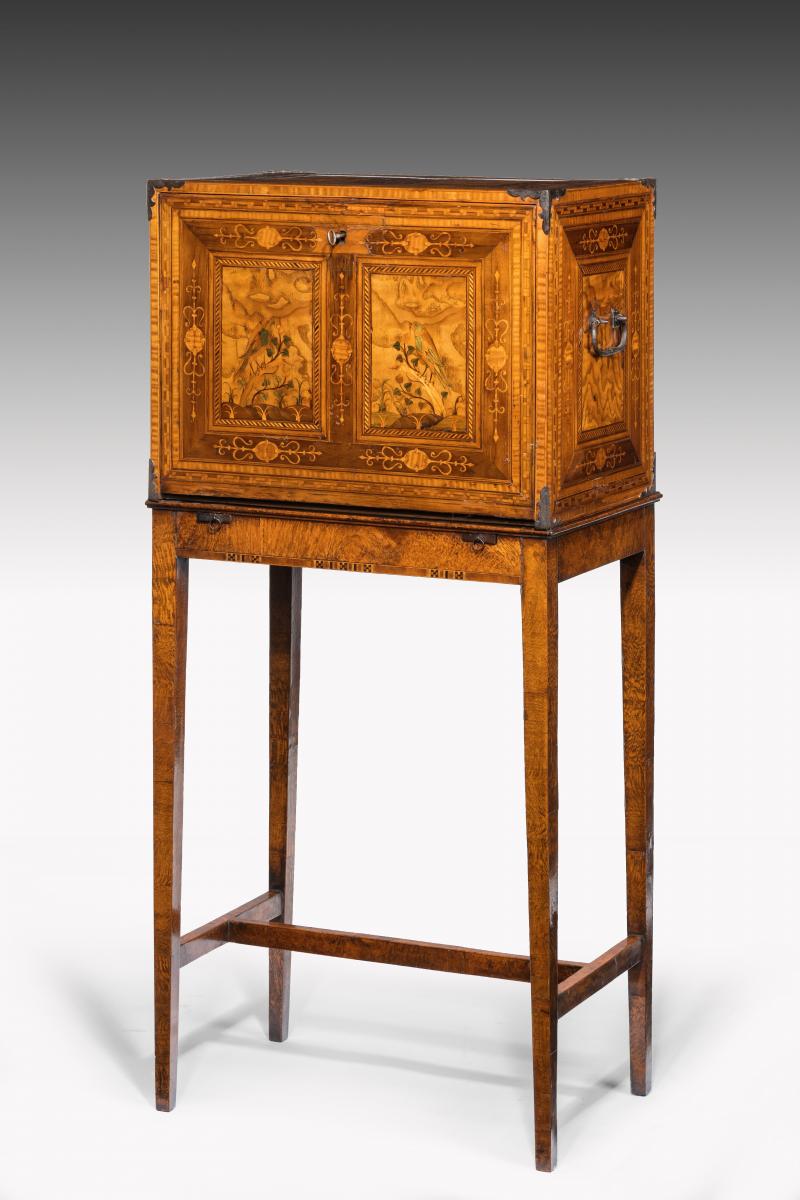
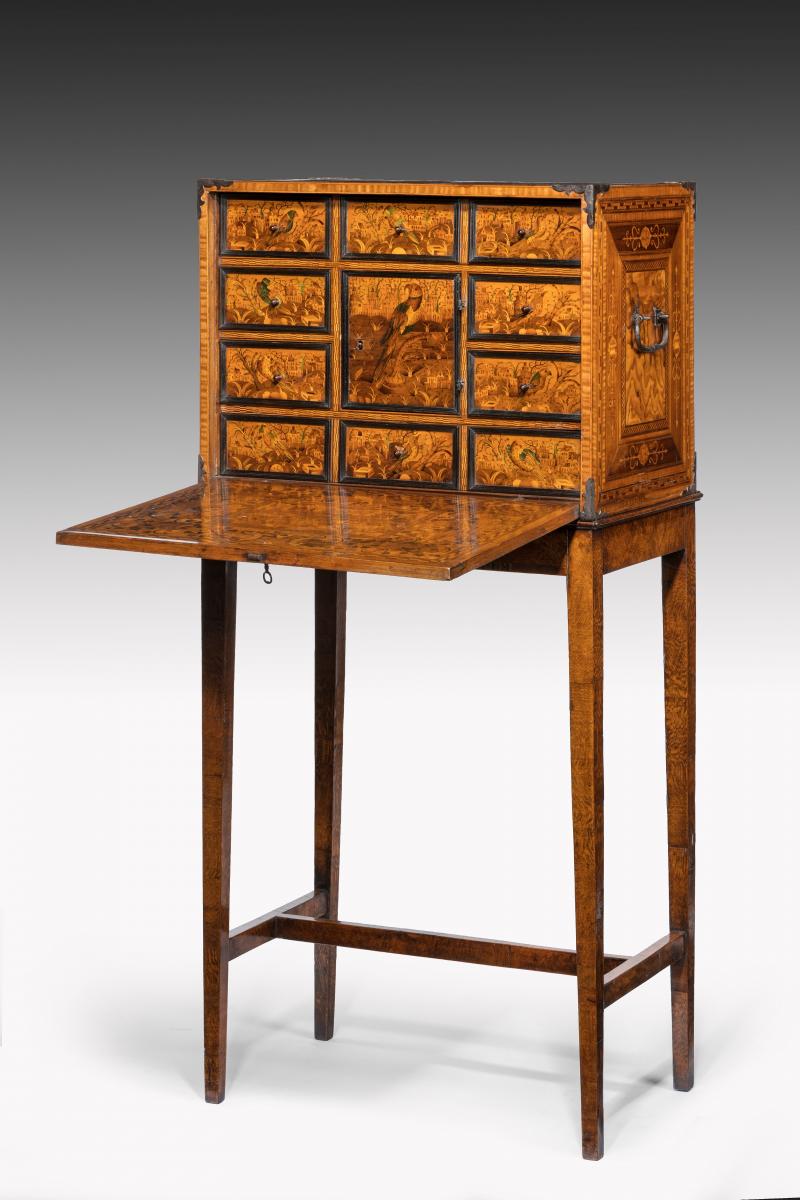
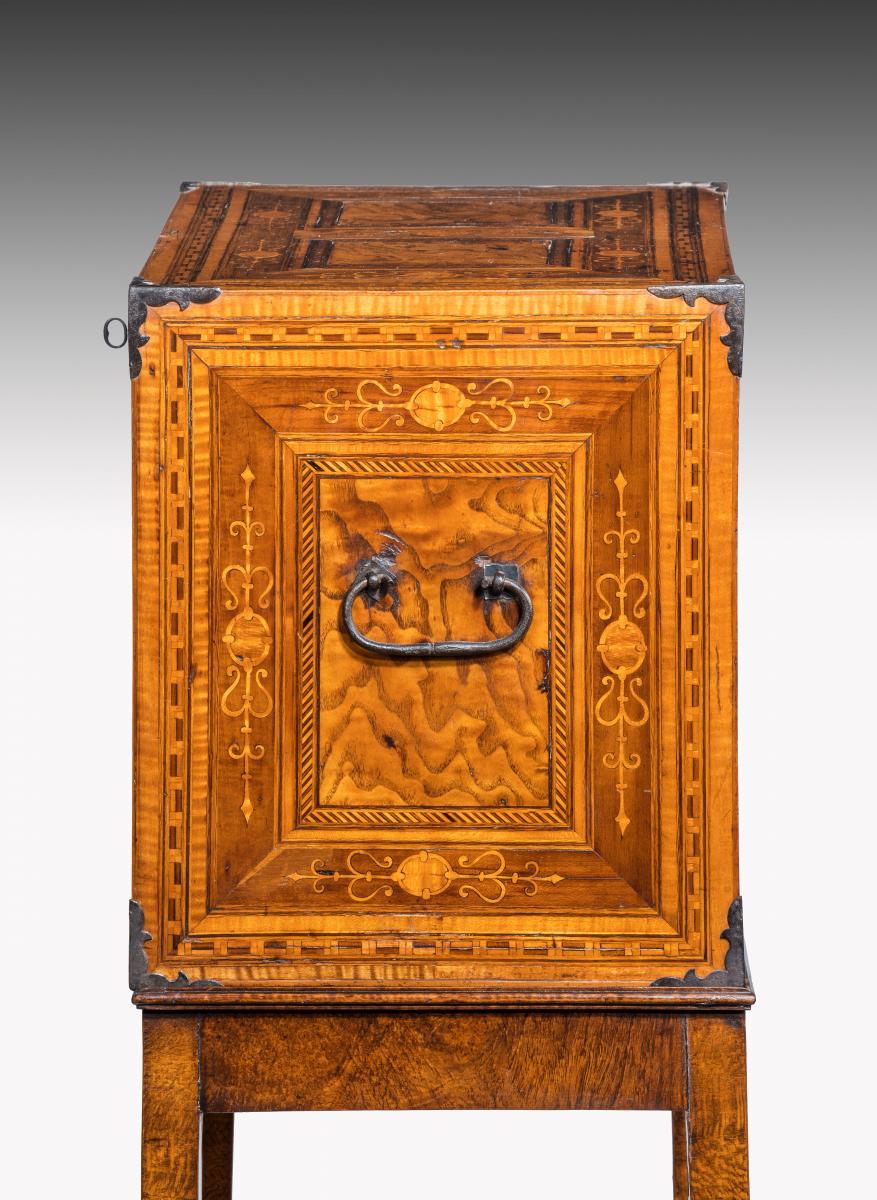
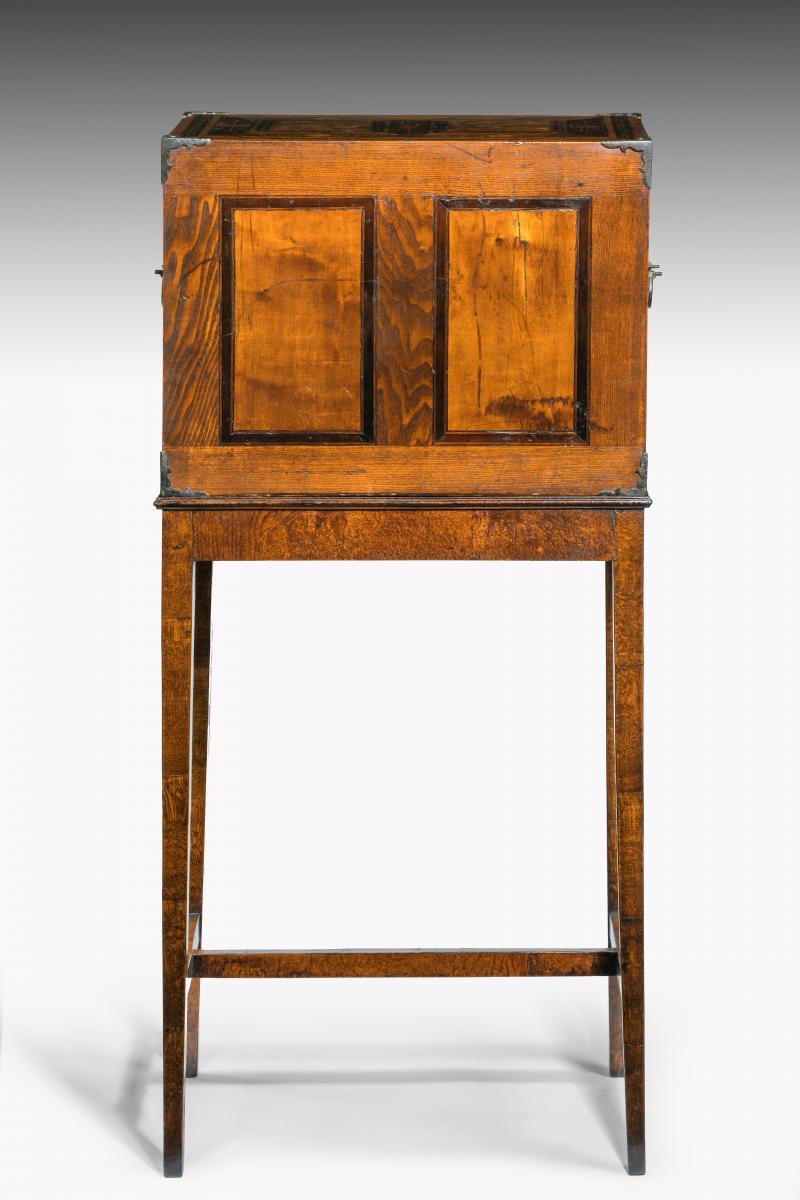
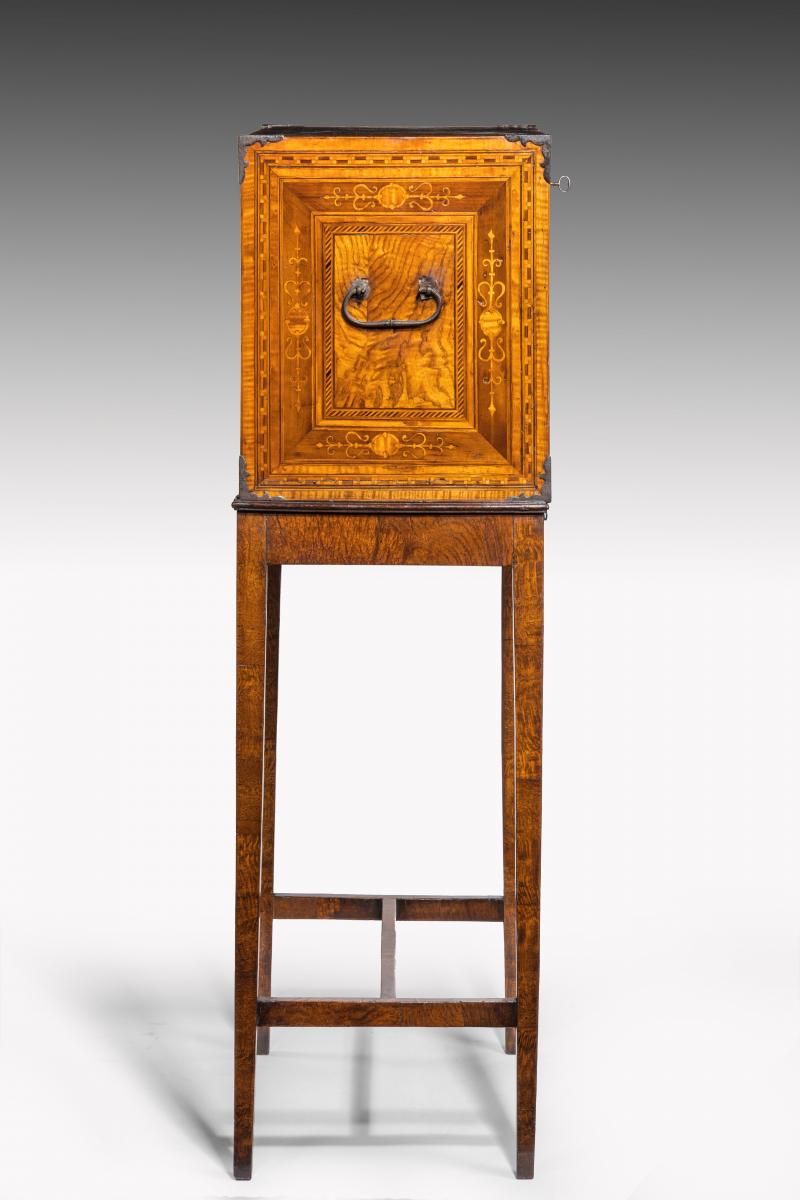
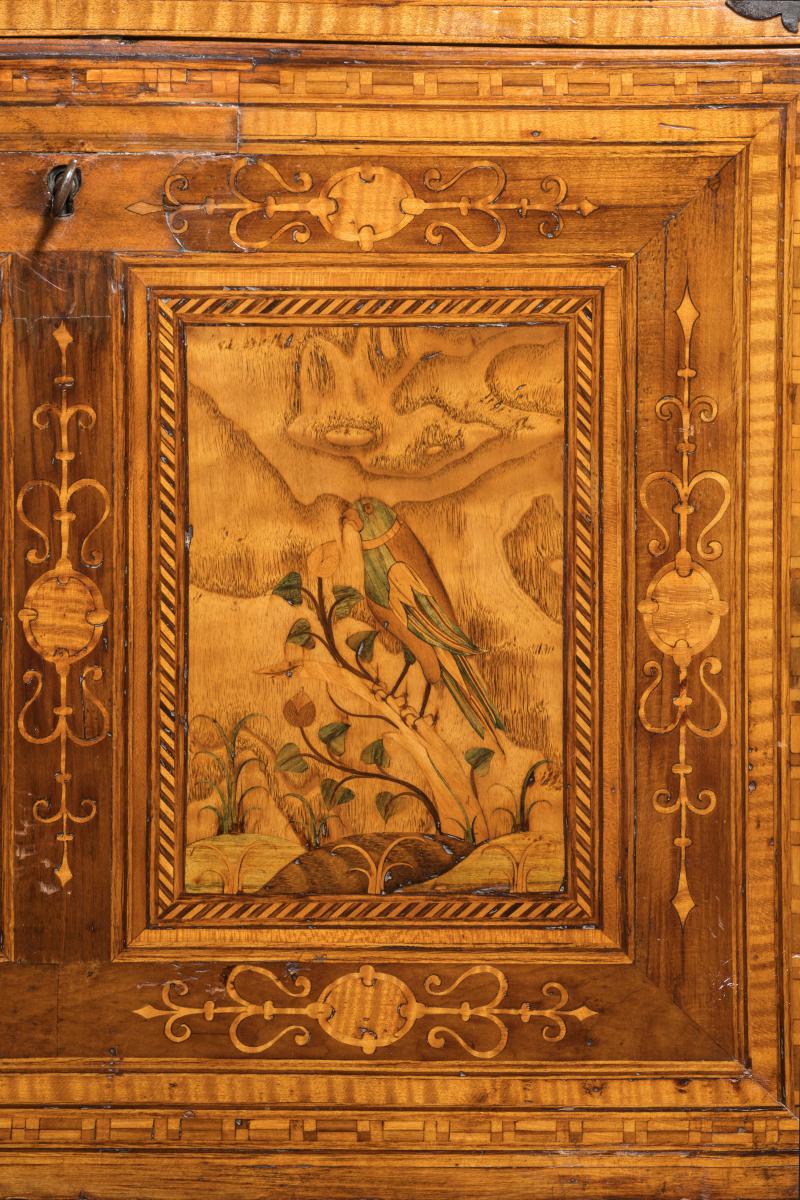
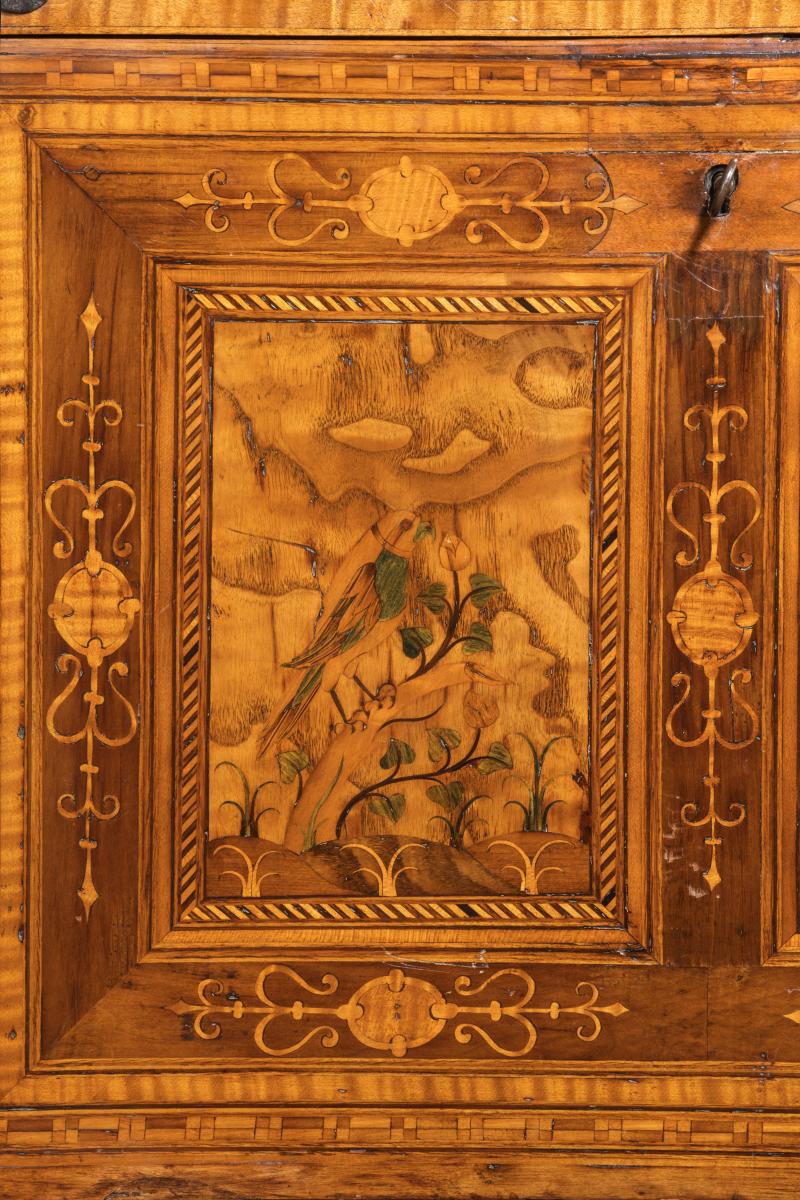
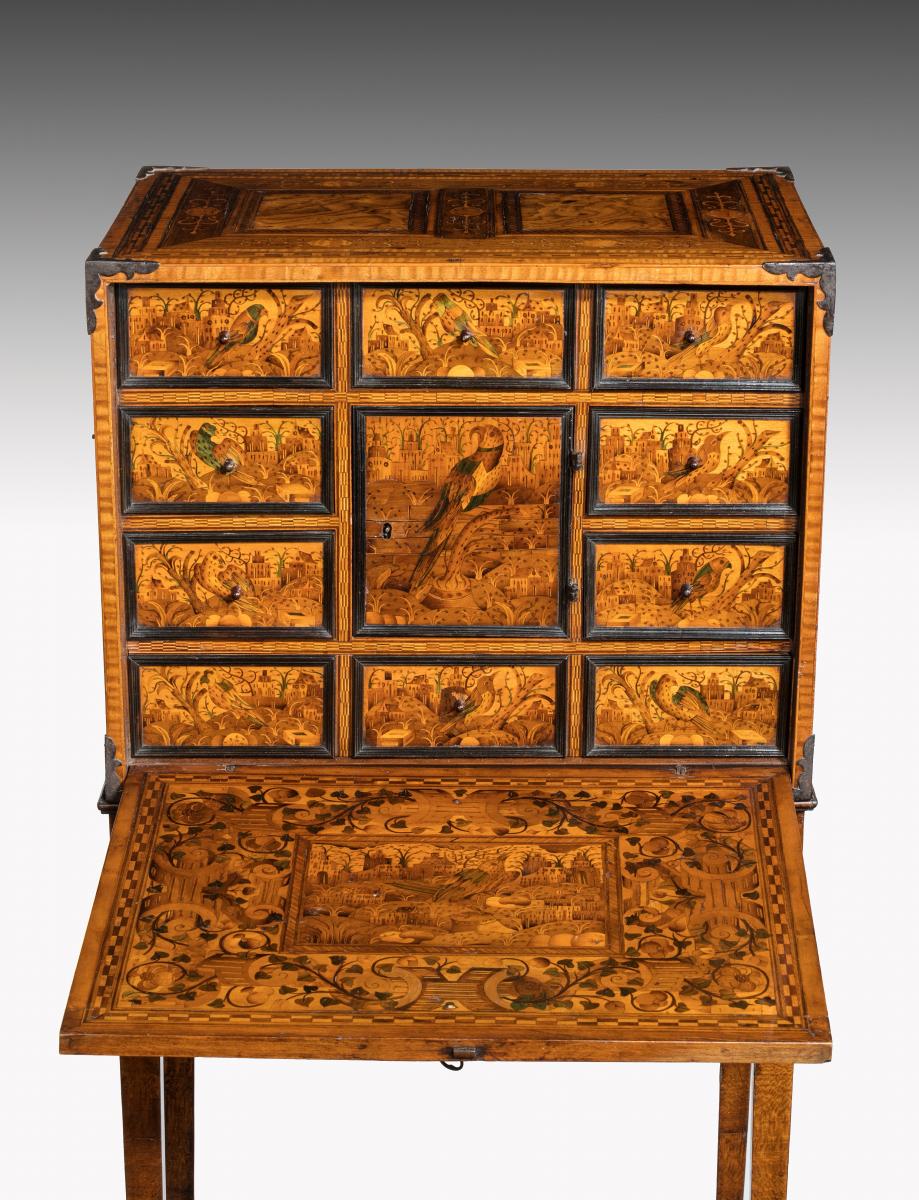
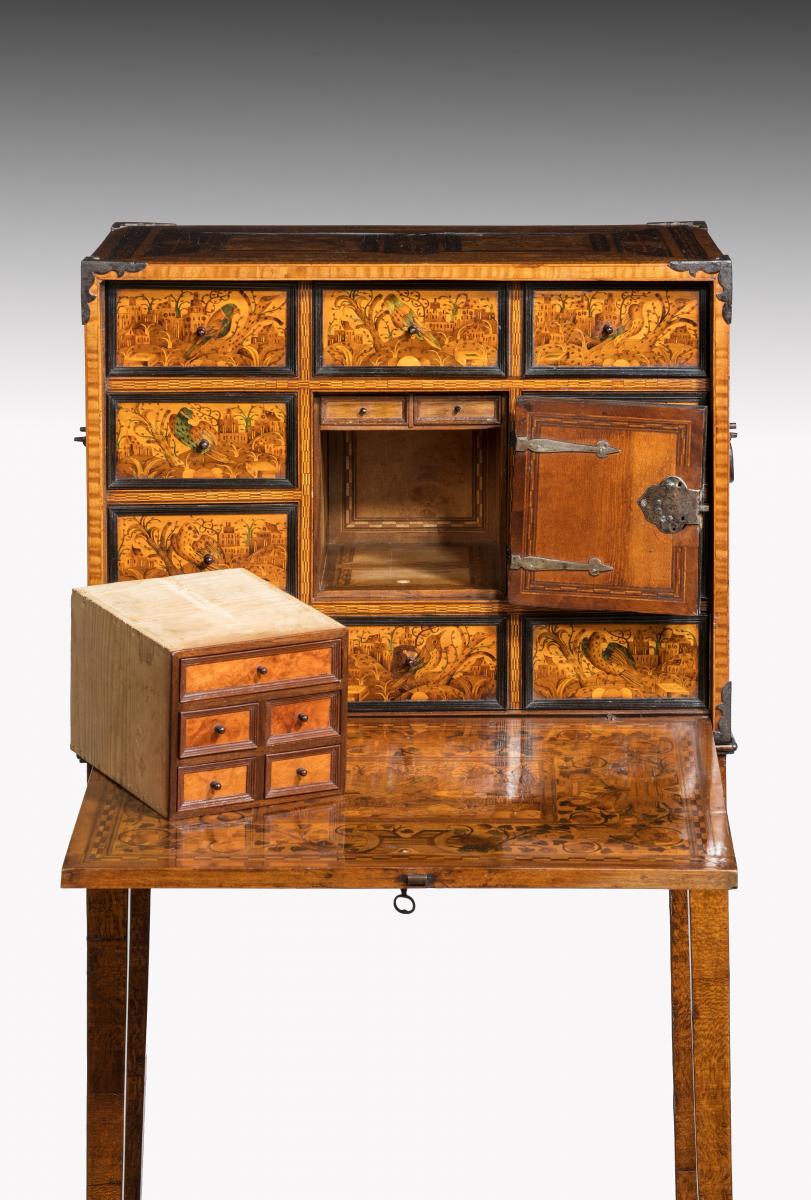
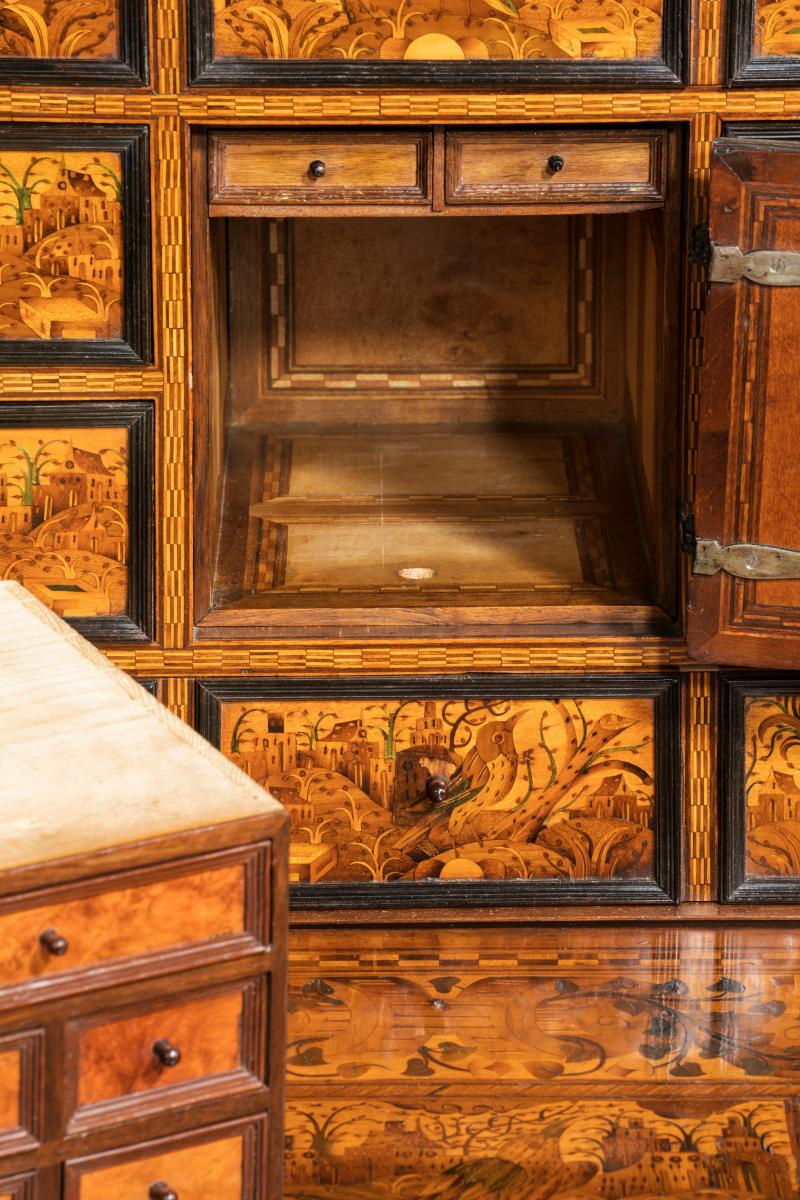
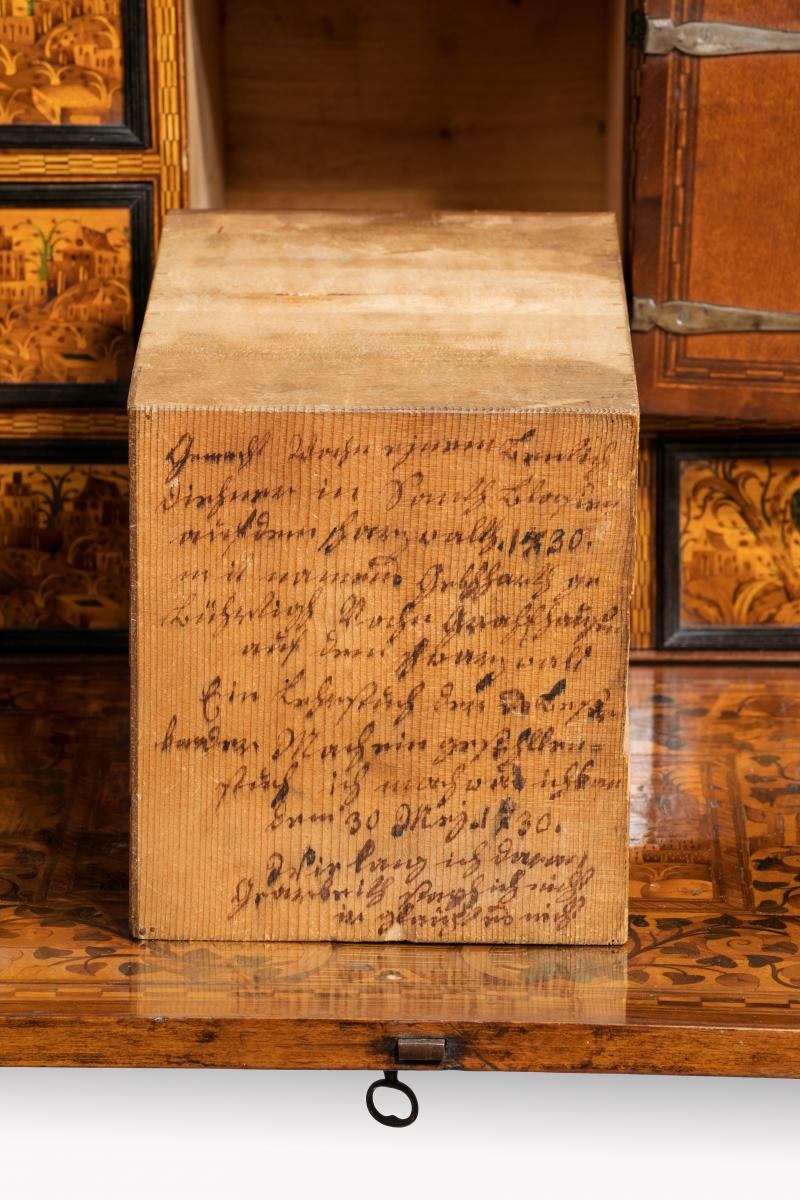
Price on application
This object includes complimentary, Insured Shipping / Delivery within the UK
This object is eligible for a Certificate of BADA Provenance
The BADA Standard
- Since 1918, BADA has been the leading association for the antiques and fine art trade
- Members are elected for their knowledge, integrity and quality of stock
- Our clients are protected by BADA’s code of conduct
- Our dealers’ membership is reviewed and renewed annually
- Bada.org is a non-profit site: clients deal directly with members and they pay no hidden fees
17th Century Marquetry Fall Front Cabinet on Stand.
TYROL, AUSTRIA or AUGSBURG, GERMANY.
The veneered stand circa 1790.
The cabinet of rectangular form, with a front which opens down, revealing a collection of drawers inside. This fold-down front adds to the utility of the object: the smooth finish serving as a convenient writing surface. The front is inlaid with two songs birds, each perched on a leafy branch. The inside of the fold-down front is inlaid with a chequered stringing outer border, encompassing scrolling foliage and sweeping pierced architectural motifs. At the centre is a rectangular border of diagonal inlay, inside which sits a bird within a cityscape. The interior arrangement of one long drawer with three separate drawer fronts across its façade; below a central door flanked on either side by four short drawers; set below a long drawer fronted as two drawers. Each drawer front is inlaid with a bird set within trees and foliage in the foreground, positioned against a cityscape. The external corners of the cabinet mounted with brass. With two carrying handles – one on each side.
The central door opens to reveal a set of drawers, which can be removed to reveal a secret compartment which contains four hidden drawers. On the reverse there is some unclear Old German script which reads: ‘Made by a cabinet maker [in or from] Saint Blasier. Brought to Schwanwald, near Lutsliegh [or Liechtenstein].’ There is a date – ‘30 March’- and it includes the comment: ‘How long I have been working on this big task you would not believe it.’ The text suggests that this cabinet is either the work of an apprentice, used to demonstrate an apprentice’s skills or a piece to demonstrate teaching skills.
From the middle of the 16th Century, Augsburg had witnessed an extraordinary ascendency as a centre of furniture production for the international market, a new phenomenon at the time. 16th Century Augsburg marquetry almost invariably depicted ruins, as appear on the present cabinet. Such 16th Century marquetry remained highly popular throughout later ages and was frequently adapted to new uses. 16th Century marquetry of this kind remained highly popular throughout later ages and was frequently adapted to new uses. Tyrol was inspired by Augsburg cabinets.
In her book ‘Der Wrangelschrank und die verwandten süddeutschen Intarsienmöbel des 16. Jahrhunderts’ (Deutscher Verein für Kunstwissenschaft, 1956), Lieselotte Möller discusses 16th Century inlaid furniture from South Germany. She illustrates a number of ‘Schreibkästchen’ and ‘Schreibtisch’ (‘writing caskets’ and ‘writing tables’), which bear similar designs to this cabinet. (figs. 132, 138, 173, 185).
Dimensions
Height: 115cm Width: 51.5cm Depth: 34cmPrice on application
This object includes complimentary, Insured Shipping / Delivery within the UK
This object is eligible for a Certificate of BADA Provenance
Stock number
513aThe BADA Standard
- Since 1918, BADA has been the leading association for the antiques and fine art trade
- Members are elected for their knowledge, integrity and quality of stock
- Our clients are protected by BADA’s code of conduct
- Our dealers’ membership is reviewed and renewed annually
- Bada.org is a non-profit site: clients deal directly with members and they pay no hidden fees


